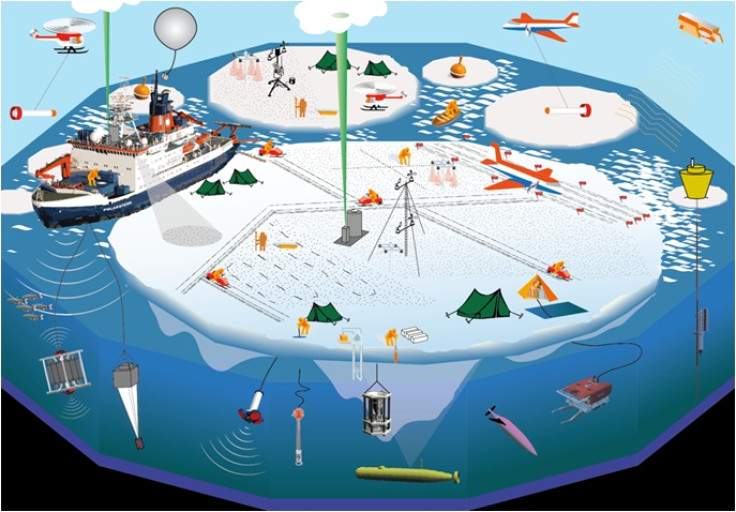Scientists to attempt year-long North Pole expedition in 2019 to study rapid climate change
Mosaic expedition will investigate how rapid warming is altering the polar vortex.

Scientists under the guidance of Mosaic (Multidisciplinary drifting Observatory for the Study of Arctic Climate) mission will attempt a round-the-year expedition of the North Pole or the Arctic Pole to study climate patterns, especially the rapid melting of ice on the pole.
The expedition will be the first since Norwegian explorer Fridtjof Nansen's attempt in 1893 to reach the North Pole by using the natural drift of the polar ice. The scientists aim to undertake the operation on board a 120m-long German research vessel, the Polarstern, to answer big questions about the Arctic, including why the region is warming faster than any other place on Earth.
"The decline of Arctic sea-ice is much faster than the climate models can reproduce and we need better climate models to make better predictions for the future," says the mission's co-leader Prof Markus Rex, of the Alfred Wegener Institute in Germany.
"There is a potential that in a few decades the Arctic will be ice-free in summer. That would be a different world and we need to know about that in advance; we need to know is that going to happen or will that not happen?"
The mission, estimated to cost €50m ($52m, £42m), will involve 50 institutions from 14 countries including the UK, US and Russia. Currently, the outlining and planning for the expedition are underway.
"The plan is to travel in summer 2019, when sea ice is thin and its extent is much smaller. We can make our way with our icebreaker Polarstern into the thin sea ice to the Siberian sector of the Arctic. Then we stop the engines and let the Polarstern drift with the sea ice."
Major goals of the mission
- To investigate how rapid warming in the Arctic is altering the polar vortex
- Direct in-situ observations of the climate processes which include the atmosphere, ocean, sea ice, bio-geochemistry and ecosystem
- Investigate life in melt ponds, small lakes that form on the ice in spring
- To support improved sea ice forecasting, regional weather forecasting, and climate predictions
Although there have been attempts at Arctic expeditions, the inability to asses the region round the year has denied scientists enough data to study the region.
Facts of interest on the Arctic Pole
- 30% of the world's untapped oil reserves are located in the Arctic Circle and the US Geological Survey says that amount could actually be higher
- When your compass points north, it's pointing to the North Dip Pole, which is also called the magnetic North Pole. But over the past century, the geomagnetic North Pole has migrated from Greenland to Canada
- Multiple countries lay claim to the Arctic Circle — Russia, Canada, Norway, Denmark (via Greenland), and the United States (via Alaska)
- But each country is allowed to explore only potential oil reserves within 200 miles of their coastlines
The extent of Arctic sea-ice was the lowest ever recorded for the month of January (during the satellite era), with temperatures several degrees above the long-term average. The climate pattern assessment is even more important as changes in the Arctic have a major impact on the weather in northern Europe and North America; yet the forces at work are not well understood.
Scientists hope the current limitation in the accuracy of forecasting weather and leaving major gaps in what climate models can explain will be filled by groundbreaking data which has never been accessed before.
"Nansen's famous Fram expedition was groundbreaking in its era and frankly in its own way the Mosaic will be that in this era. It will be this very momentous step forward," said Matthew Shupe, a scientist from the University of Colorado, who is co-leading the mission.
© Copyright IBTimes 2024. All rights reserved.






